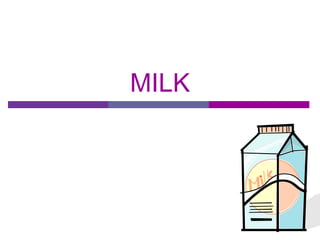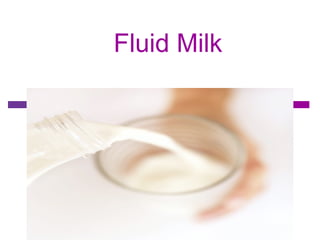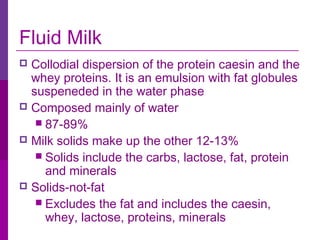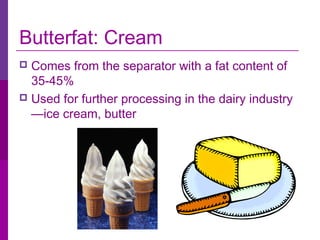The document discusses milk and milk products. It defines milk and describes the quality control process during milk production. It explains pasteurization and homogenization. It then discusses various milk products like fluid milk, butter, concentrated/dried dairy products, cheese, and others. It provides details on the production processes for these different milk products.




























